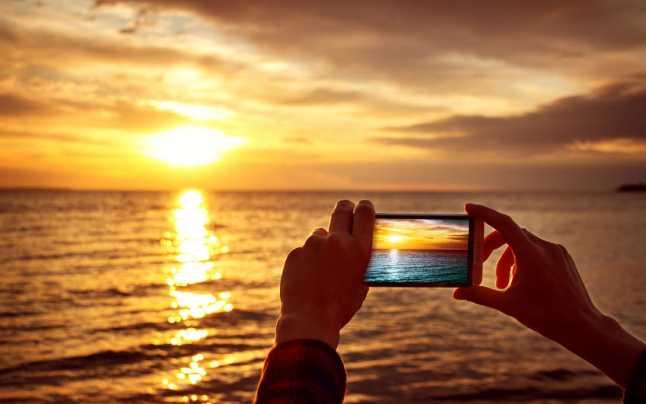The best phone to use on vacation for photos is a Samsung Galaxy S7. It has a 12 megapixel camera capable of capturing very good images even in low light conditions. The iPhone SE is also a good choice, but it runs iOS and you have to take that into account if you come from the Android world. The camera is the same as on the iPhone 6s and it handles very well both for photos and videos. A middle choice is the Huawei P8 Lite, an Android smartphone available at a lower price than the first two, but which uses good hardware developed by the manufacturer for which there is well-implemented software support. Now that the phone has been chosen, here are the tips.
A first, and very important, rule is not to use digital zoom. Phones no longer have optical zoom (which involved moving the lenses), most of them, and just because the manufacturer introduced a digital one doesn't mean it's useful. Moreover, it destroys the image. Rather, you take a picture at maximum resolution, 12MP on the Galaxy S7 or iPhone SE, then cut out those elements you don't like. Manufacturers implement fast image processing options, so digital zoom can be forgotten.
If you don't like the pre-installed apps, you can choose another one from the App Store or Play Store. You also need one because the final image you want to present to the world may not be rendered the way you want the phone to be - it depends on each manufacturer's algorithm. In this case, processing means adjusting shadows, straightening the frame, adjusting brightness, contrast and even sharpness. You can also add or remove from the color saturation and you can print that something of your style on each photo.

For better control over the frame, select the focus area directly from the smartphone screen and choose manual settings to control the shutter speed and ISO value (when possible). However, keep in mind that a longer exposure time can generate a shaky photo. That's why you can use a tripod or a flat surface to support the phone. However, the image noise will be reduced and the final picture will look much better. During the day, when the sun is strong, it also uses the HDR option to reproduce both the bright areas and the shadows as well as possible.
Also keep in mind that it helps you to keep the phone as a division of the screen according to the rule of thirds. It's a gold standard in photography and this matrix can be enabled from the settings. The name comes from the way the frame can be divided. If the subject is always in the center, it is boring and the pictures will be banal. If it is in one of the third extremes, then it gives dynamism to the image.
When it comes to portraits, you have to convey the story behind the photographed face: joy, sadness, wonder, indignation can be good allies in creating a memorable portrait. The best thing is to "hunt" the moments and capture that frame in which it seems to you that the photographed person conveys an emotion. In landscapes, the rule is simple: the horizon line should be parallel to an edge of the phone to have a well-proportioned picture.
The situation is similar with selfies, where you can use a selfie stick. On average, young people take nine selfies a week, which means that for them it is very important that the phone they use offers the best quality of the image, but also comes out in the pictures as they wanted. For a successful selfie, as a rule of presence in the picture, a natural pose is recommended, which conveys a state of mind. A good light will help the quality of the photo, and phones like the Samsung Galaxy S7 iPhone 6s can turn the screen into a light source, like a flash, to have an even better image.
